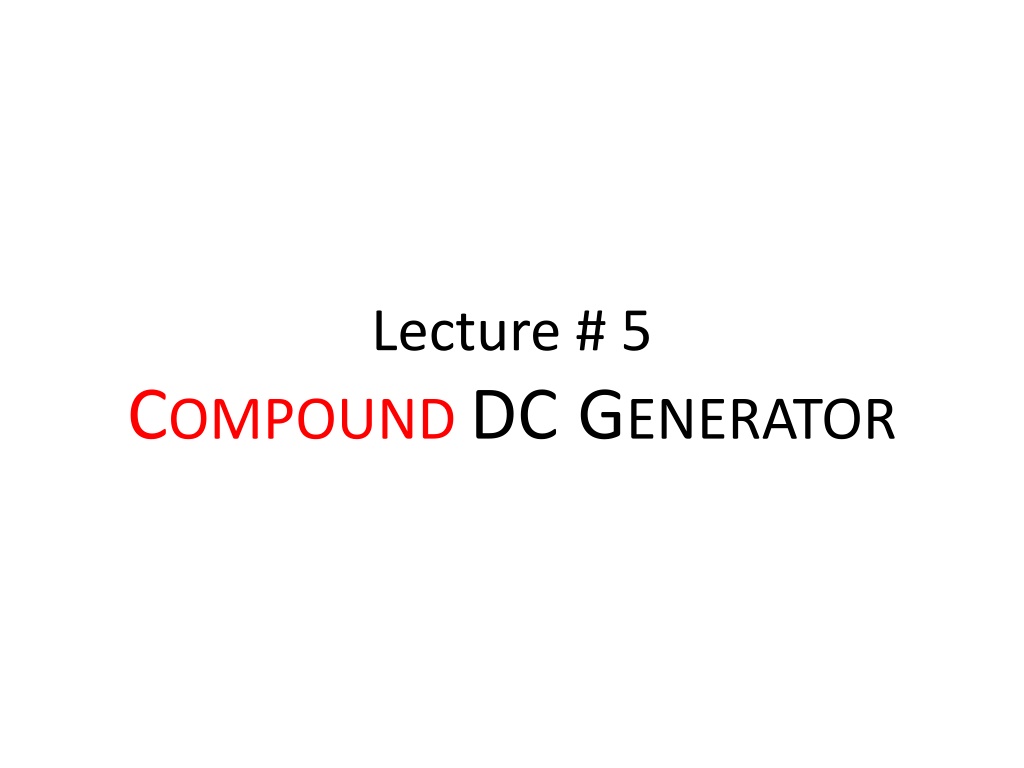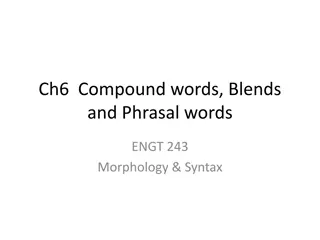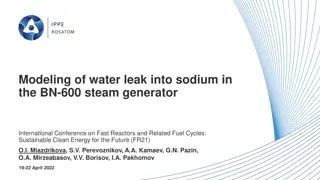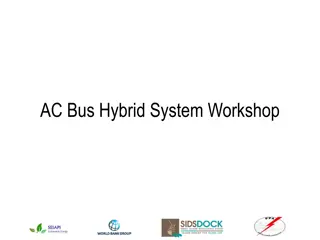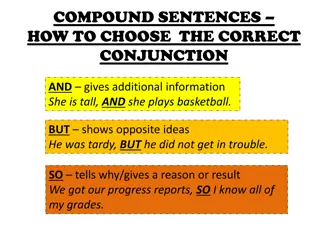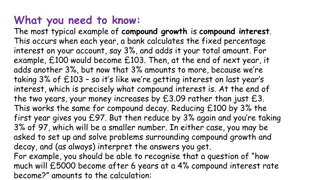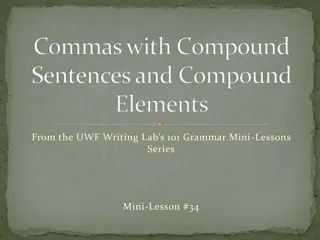COMPOUND DC GENERATOR
Exploring the operation and characteristics of a compound DC generator. This lecture delves into the design, working principles, and applications of this type of generator in various industries. Gain insights into the unique features that distinguish a compound DC generator from other types, including its efficiency and performance. Understand how it generates electrical power and the benefits it offers for different power generation needs. Dive into the intricacies of its components and the role they play in producing electricity consistently and reliably.
Download Presentation

Please find below an Image/Link to download the presentation.
The content on the website is provided AS IS for your information and personal use only. It may not be sold, licensed, or shared on other websites without obtaining consent from the author.If you encounter any issues during the download, it is possible that the publisher has removed the file from their server.
You are allowed to download the files provided on this website for personal or commercial use, subject to the condition that they are used lawfully. All files are the property of their respective owners.
The content on the website is provided AS IS for your information and personal use only. It may not be sold, licensed, or shared on other websites without obtaining consent from the author.
E N D
Presentation Transcript
Lecture # 5 COMPOUND DC GENERATOR
COMPOUND DC GENERATOR o When the series field is used along with the shunt field, we havea compound dc generator. o The purpose of the compound generator is to improve theload characteristics of the shunt generator as loadincreases. (a) Long Shunt (b) Short Shunt Types of compound dc generators 32
COMPOUND DC GENERATOR Two types of compound dc generators: 1.Differential compound generator: the series field polarity opposes the shunt field polarity. 2.Cumulative compound generator: both the shunt field and series field have the same polarity and the series field aids the shunt field (add flux together). 1.Differential Compound DC Generator: o As the current I passes through the series field, the total flux will go down rapidly since the polarities of the series and shunt fields oppose eachother. Therefore, Eg will decrease. o As load increases, the voltage will drop sharply because of the flux decrease. o It is good for constant-currentapplications. 33
COMPOUND DC GENERATOR 2. Cumulative Compound DC Generator: o Both the shunt field and series field have the same polarity and theseries field aids the shunt field (add flux together). o The flux will not decrease as sharp as it did with differentialcompound generator. o Types of Cumulative Compound DC Generator: Over compounding: the full-load voltage is larger than no-loadvoltage when the series field is strong. Flat compounding: the full-load voltage is relatively equal to no-load voltage. Under compounding: the full-load voltage is less than the no-load voltage. 34
COMPOUND DC GENERATOR Example 6: A long shunt compound generator rated 5-KW, 125-V has an efficiency of 80% when supplying rated load. If Rf = 125 , Ra = 0.2 , and Rs = 0.05 , find at full- load: Sol. a) The load current: Po = Vt. IL IL = Po/Vt = 5000/125 =40A + , then Vf b) The field current: If = Vf/Rf = Vt/Rf = 125/125 =1A _ c) The armature current:[KCL] Ia= IL + If=41A 36
COMPOUND DC GENERATOR Example 6: A long shunt compound generator rated 5-KW, 125-V has an efficiency of 80% when supplying rated load. If Rf = 125 , Ra = 0.2 , and Rs = 0.05 , find at full- load: Sol. d)The copper loss: Pcu = Rf I2+ (R + R )I2 f a s a Pcu=125x12+ (0.2 + 0.05)x412= 545.25W e) The stray powerloss: % =Po 100 Pi =Po 100 =5000 100 = 6250 W Pi Pi= Po+ Pcu+ Pst Pst= Pi Po Pcu 80 Po Pi Pconv Pst = 6250 5000 545.25 = 704.75W Pst Pcu 37
COMPOUND DC GENERATOR Example 7: A short shunt compound generator rated 3-KW, 200-V has stray losses of120-W at full load. If Rf = 100 , Ra = 0.9 , and Rs = 0.2 , find at full- load: Sol. a) The load current: + Po = Vt. IL , then Loop 2 Vf Loop 1 IL = Po / Vt = (3 103)/200 = 15A b) The shunt field current: Solve for Vf : [KVL] Loop1 If = Vf / Rf = 203/100 = 2.03A Vf + Rs IL +Vt = 0 , then c) The armature current:[KCL] Vf = Rs IL +Vt V = (0.2 15) + 200=203V Ia = IL + If = 15+2.03=17.03 A f 38
COMPOUND DC GENERATOR Example 7: A short shunt compound generator rated 3-KW, 200-V has stray losses of120-W at full load. If Rf = 100 , Ra = 0.9 , and Rs = 0.2 , find at full- load: Sol. d) The generated : [KVL] Loop 2 Eg + Ia Ra+ Vf= 0 , then Pi Po Pconv Pst Pcu Eg = Ia Ra + Vf Eg= (17.03 0.9) + 203 = 218.33 V e) The converted power: P conv = EgIa =218.33 17.03 = 3718W f) The total copperloss Pcu = Pconv Po Pcu= 3718 3.0 103= 718W or Pcu= RfI2+ R I2+ R I2 a f a s L Pcu= 412 + 261+ 45 = 718W g) The efficiency: Pi = Pconv +Pst Pi = 3718 + 120 = 3838W % =Po 100 =3000 100 = 78.2% Pi 3838 39
SOLVED PROBLEMS Example 8: An 8-pole dc shunt generator with 778 wave-connected armature conductors and running at 500rpm supplies a load of 12.5 resistance at terminal voltage of 250V. The armature resistance is 0.24 and the field resistance is 250 . Find a) the armature current, b) the induced emf and c) the flux perpole. Sol. a) The armature current: Ia = IL + If = Vt/IL+ Vf/If ; Vf =Vt = (250/12.5) + (250/250) =21A b)The induced emf: (Loop 1) Eg = Ra Ia + Vt Eg = (0.24 21) + 250= 255V c) The flux perpole: = Nsyn2 = 500 2 = 52.36 rad/s 60 + Loop 1 Vf 2 a Eg Z P Z P 2 a Eg= = 2 2 255= 9.83mWb 778 8 52.36 = 60 49
SOLVED PROBLEMS Example 9: A 4-pole, 900 rpm dc machine has a terminal voltage of 220 V and an induced voltage of 240 V at rated speed. The armature circuit resistance is 0.2 . a) Is the machine operating as a generator or a motor ? b) Compute the armature currentand c) the number of armature coils if the air-gap flux/pole is 10 mWb and thearmature turns per coil are 8. Knowing that the armature is simplexwave-wound. Sol. a) Since the induced voltage Eg is more than the terminal voltage Vt ; [Eg > Vt], then the dc machine is working as a generator. N = aEg E =N P a Eg Vt g =240 200=100A 0.2 P = b) I a Ra 2 240 4 10 10 3 94.25 Since there are 8 turns in a coil, it means there are 16 active conductors/coil.Hence, the Number of Coils = 400/8 = 50coils. N = = 400 c) = Nsyn 2 = 900 2 = 94.25 rad /s 60 a = 2 Plex = 2 1= 2 pathes 60 41
Extra Problems 1) A generator turning at 200 rad/s develops 252V. As a result of a short in the field winding, the flux drops by 30%. This causes a drop in voltage. How fast should it turn to restore the voltage to its original value? 2) A 220 V, 10 kW generator has 255 V measured at its terminal under no-load condition. What is the percent voltage regulation? A 1 kW, 120 V generator has a full-load regulation of 18%. What voltage should be measured at its terminals at no-load? 3) 4) A 5 kW, 230 V generator requires 9 hp when supplying rated load. What is the full load efficiency? 5) A shunt generator whose no-load voltage is 480 V is connected to a 440 V bus. If Ra = 0.6 and Rf = 165 , find the power it will supply to thebus? 6) A 100 kW, 600 V short shunt compound generator has Rf= 300 , Ra= 0.1 , Rs= 0.05 , and constant stray power losses of 2.4 kW. Find the efficiency at full-load. 42
Extra Problems 7) For the generator characteristics shown in the figure below, calculate the percent voltage regulation for each generator at full-load current of 12A. 400 Gen.1 350 Gen.2 300 250 Gen.3 Vt[V] 200 150 Gen.4 100 50 0 3 6 9 12 15 IL[A] 43
